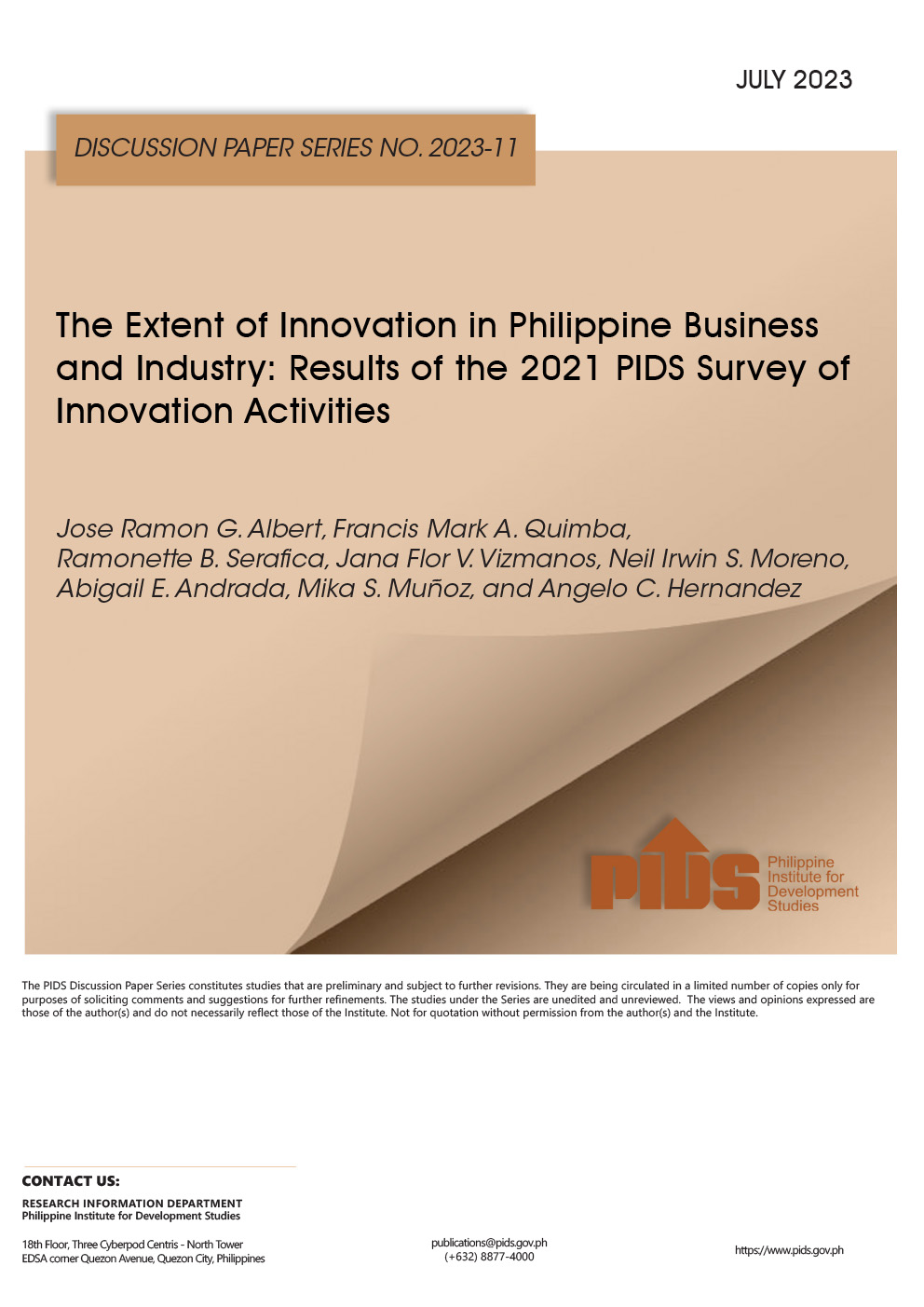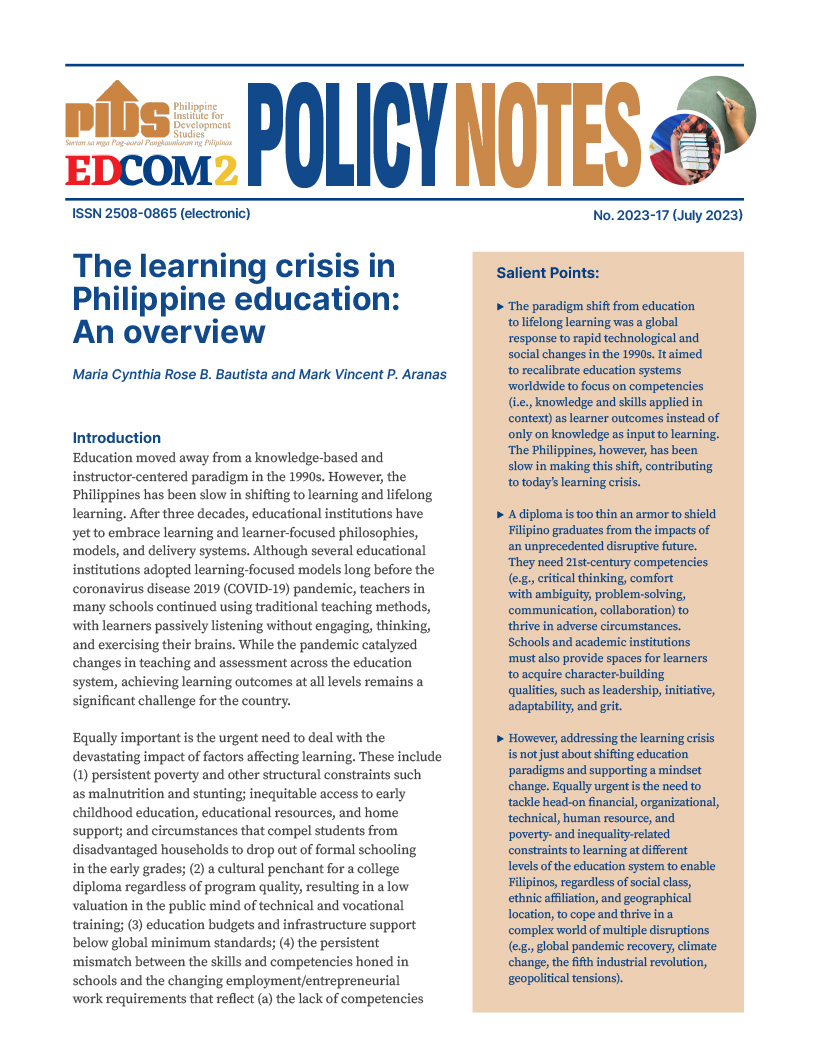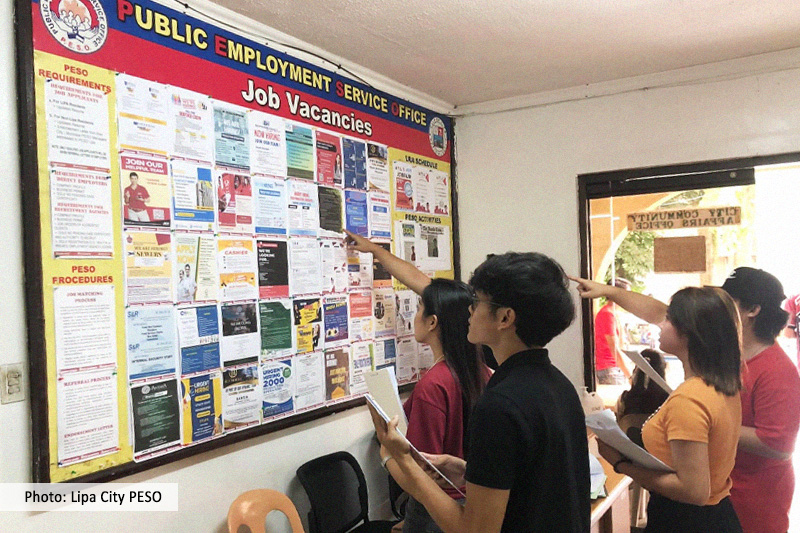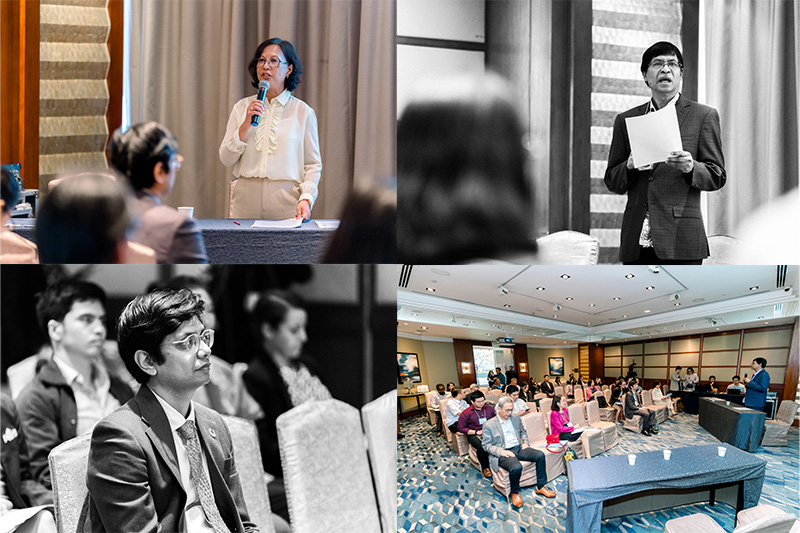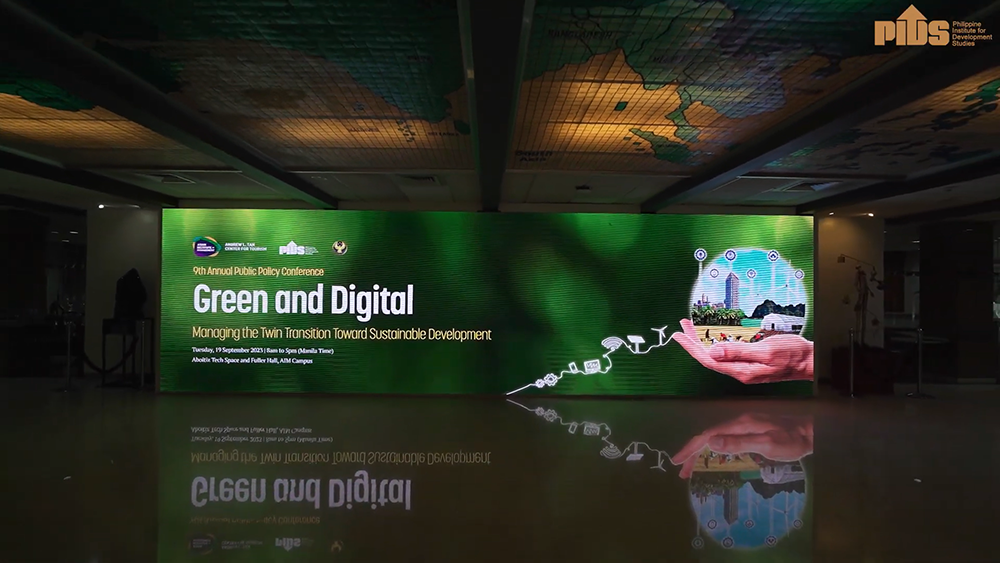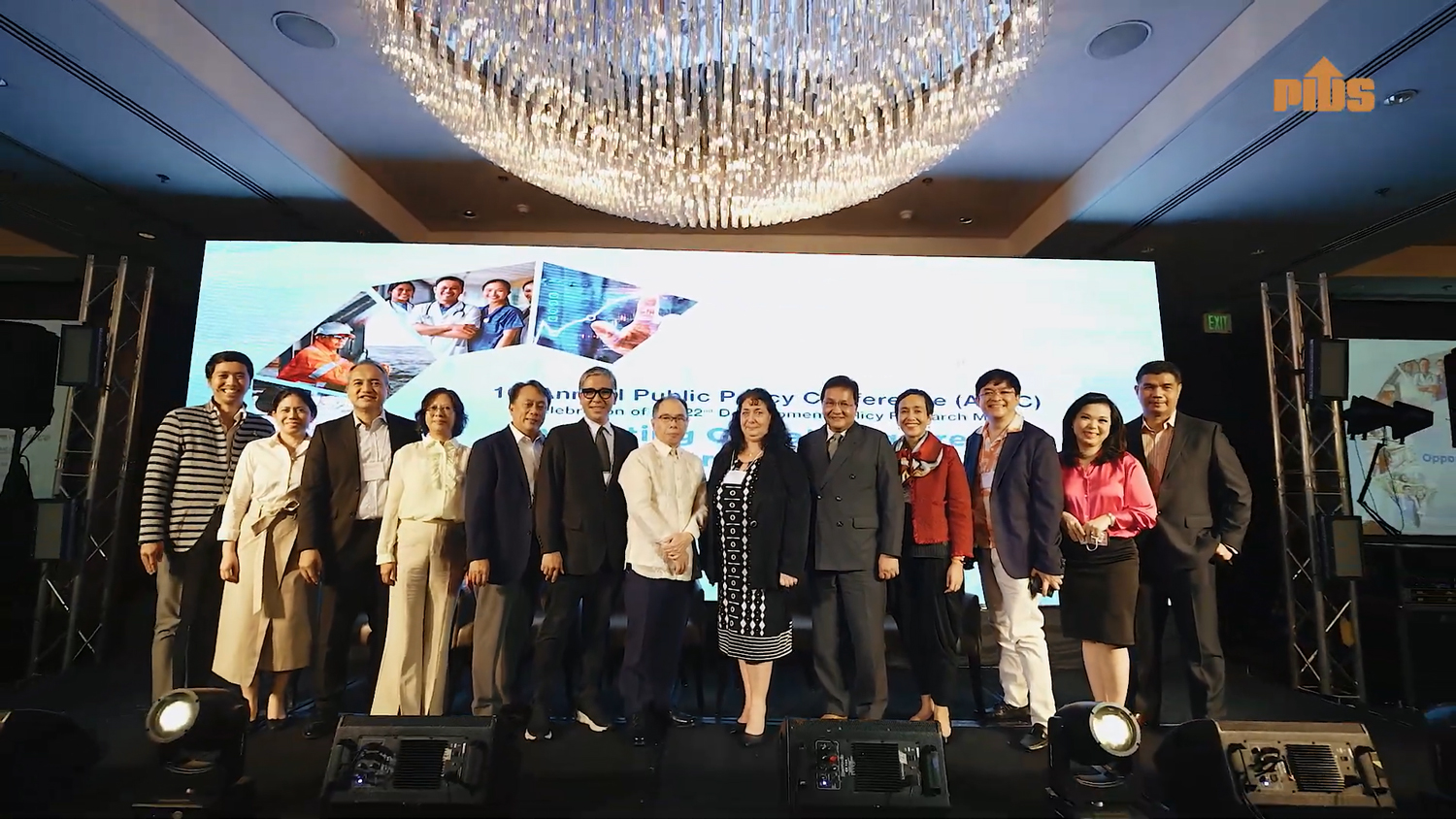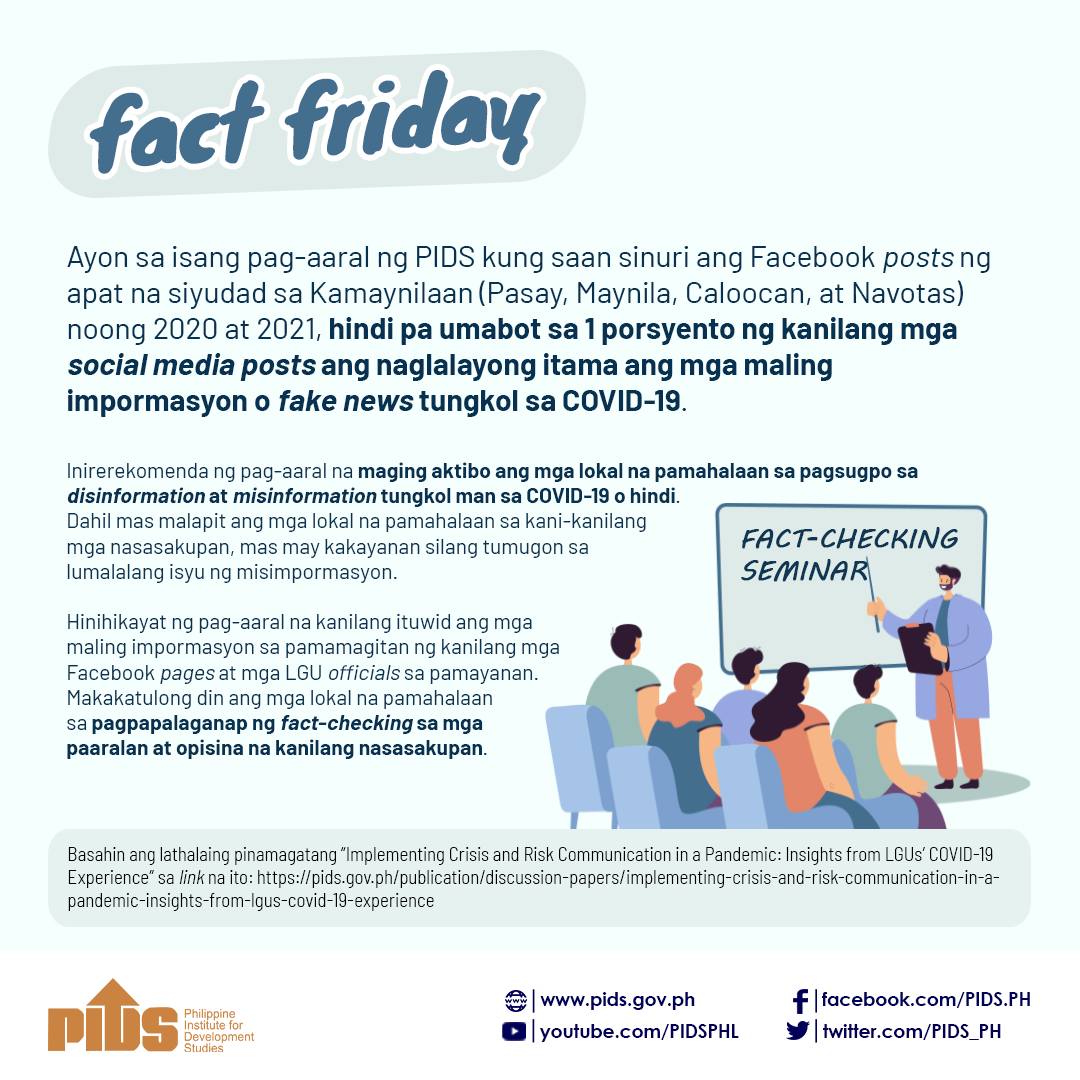The New Year finds us still grappling with the worst public health emergency and economic decline in the country’s history. While no country was spared the pandemic, its impact has varied according to how governments responded. The Duterte administration’s poor response to the pandemic is behind the Philippines having among the worst health and economic outcomes in the region.
The government’s response can be much more scientific, rational and humane. Its politicized, militaristic and insensitive approach has instead gravely worsened pre-COVID19 socioeconomic woes and undermined the prospects for rapid recovery. The adverse effects are borne most heavily by the poor and low-income majority of the population.
The economy is still far from recovering to even just the same levels as before the pandemic. As it is, Filipino families, distressed enterprises, and even local government units (LGUs) are seemingly being left on their own to deal with the COVID-19 and their economic troubles. The national government can do much more which starts with acknowledging the gravity of our country’s problems.
The following are among key points discussed during IBON’s 2021 Yearstarter Birdtalk:
Collapsing growth
Contrary to repeated government claims, the economy was weak coming into the pandemic. Gross domestic product (GDP) growth was consistently slowing from 7.1% in 2016 to 6.9% in 2017, 6.3% in 2018, and 6% in 2019. Job generation was also weakening at an average of just 477,000 annually in the period 2016-2019 compared to 541,000 in 2011-2015 and 815,000 in 2010-2014. The pandemic and especially the harsh lockdowns and protracted community quarantines made the situation even worse.
The 4th quarter results are not out yet but it is already clear that 2020 saw the worst economic collapse in the country’s history. The economy contracted with -16.5% growth in GDP during the 2nd quarter and -11.5% in the 3rd quarter. Growth will still be negative in the 4th quarter and the full year contraction is possibly going to be even worse than the official government projection of -8.5 to -9.5 percent.
The number of employed Filipinos meanwhile fell by 2.6 million from 2019 levels to 39.4 million in 2020 (whole year average). This is even less than the 41 million employed in 2016 which means that four years of employment growth were wiped out. The situation was worst in the 2nd quarter at the height of the lockdowns when employment fell to just 33.8 million.
The government officially counted 3.8 million unemployed as of October 2020. IBON however estimates at least an additional two (2) million invisibly unemployed – those forced to drop out of the labor force by unfavorable labor market conditions – for a total 5.8 million unemployed Filipinos instead.
Overseas work also took a hit. Over 680,000 overseas Filipino workers (OFWs) were reported by government as seeking assistance last year. Meanwhile, OFW deployment dropped drastically with only some 682,000 leaving the country from January to September 2020 which is 60% less than the previous year. This bodes even weaker remittances in the years to come.
The Philippine Institute for Development Studies (PIDS) meanwhile estimates that the number of poor Filipinos may rise from 17.6 million living on Php71 per person per day to 29.7 million should incomes contract continuously up to 20% without emergency cash subsidies.
The Duterte administration however has become stingy with its emergency relief for millions of poor families and for production support. As of January 2, 2021, only 417,650 out of 1.57 million target beneficiaries have reportedly been given cash assistance amounting to Php2.36 billion. Just some 1.97 million of around 3.4 million formal and informal workers and OFWs, meanwhile, have been given assistance worth Php10.3 billion. As of December 23, 2020, only 5,324 loans for MSMEs were in the pipeline for processing and release.
High unemployment, low household incomes and limited support for MSMEs combine in a vicious cycle of depressed economic activity. Economic activity is further dampened by the continued spread of COVID-19 and protracted community quarantines.
Spending mispriorities
The economic managers’ obsession with creditworthiness prevents the fiscal stimulus needed to arrest economic distress and hasten recovery. The refusal to spend more limits programs in the crucial areas of health, relief and production support.
In 2020, programmed disbursements only increased by Php121 billion, to Php4.3 trillion, which is a piddling fiscal stimulus equivalent to just 0.6% of GDP. The Asian Development Bank (ADB) reports that the Philippines’ total multi-year COVID-19 response is equivalent to just 6.3% of GDP including a fiscal response of just 4.1% of GDP – these are the smallest among the major economies of Southeast Asia.
The recently approved Php4.5 trillion 2021 national budget meanwhile is only 9.9% bigger than the 2020 General Appropriations Act (GAA). This is smaller than the historical annual average increase of 11.1% for the past four decades. This is also even smaller than the 23.6% and 13.6% budget increases of the Duterte administration in 2017 and 2020, respectively.
The 2021 budget gives grossly disproportionate attention to infrastructure, with Php1.1 trillion for roads, ports and railways, and for defense and debt servicing. The infrastructure budget increases even as the budget for much more urgent public health measures is inadequate. Moreover, increasing financial support for vulnerable families and millions of small businesses will have a much greater multiplier effect on the economy than equivalent spending on import-intensive infrastructure projects, military modernization, and debt service.
Vaccine missteps
The Duterte government gives too much attention to vaccination in managing the pandemic over making testing, tracing, isolation and care more effective, affordable and accessible. Even then, the government’s vaccination program is chaotic and inequitable. This fuels distrust with the program and even vaccination itself with, according to recent surveys, may Filipinos already hesitant to get vaccinated as it is. This will only delay even further the country’s achieving herd immunity and normalcy.
First, procurement is marred by the lack of transparency and visible insistence on the vaccine from China’s Sinovac despite allegations of being unduly expensive and having less efficacy than other options. Second, the system of vaccine approval and prioritization is compromised by reports of presidential security, government officials and Chinese POGOs getting vaccinated in advance.
Third, the government’s prioritization of vaccination is even put into question by its not being a priority in the national budget. Of the estimated Php82.5 billion needed, only Php2.5 billion of the 2021 budget is allocated for vaccines under programmed funds; Php70 billion is under unprogrammed funds and likely to be funded from additional borrowing, while Php10 billion will be from Bayanihan 2. The Department of Health (DOH) says that some 50-70 million Filipinos are targeted for inoculation.
Showing lack of confidence in the national government’s vaccination program, many LGUs are taking the initiative to procure vaccines on their own. However, there is a clear bias with high revenue-generating LGUs much more able to do this than poorer LGUs. Moreover, it remains unclear to what extent LGU vaccination schemes will be consistent with the national government’s prioritization.
Cha-cha insistence
Key arguments of proponents for changing the economic provisions of the 1987 Constitution were refuted.
First, citing United Nations Conference on Trade and Development (UNCTAD) data, FDI was shown to have a relatively minor role in the economic take-off of South Korea and Taiwan in the 1970s and 1980s. Indeed, it was shown that the Philippines today is actually receiving relatively more FDI than these two East Asian countries at the time of their rapid industrialization.
Measured as a share of GDP, FDI inflows were just 1.7% in South Korea and 5% in Taiwan between 1970-1984 when their GDP growth rates averaged some 7-10% annually. In contrast, the Philippine’s FDI inward stock was equivalent to 23.1% of GDP in 2015-2019 with growth averaging only 6.6% annually over that same period.
South Korea and Taiwan were the last newly-industrialized countries (NICs) to graduate to developed country status. This was in the 1980s and it is notable that no other NIC has achieved such developed country status in the last four decades of globalization.
Second, key Philippine sectors have actually been shrinking in relative terms as FDI into the country increased. FDI inward flows increased over thirty-fold from an annual average of US$187 million in 1980-1984 to US$6.3 billion in 2015-2019. The Bangko Sentral ng Pilipinas (BSP) shows that FDI in manufacturing tripled from an annual average of US$286 million in 2000-2004 to US$728 million in 2015-2019. But manufacturing’s share in GDP has fallen from 22.5% in 2000 to 18.6% in 2019. The sector’s share to total employment also fell from 10% to 8.5% over the same period.
Third, data on FDI restrictions from the Organization for Economic Cooperation and Development (OECD) and on FDI inward flows from UNCTAD shows that an economy’s restrictiveness does not necessarily deter FDI and vice versa. Plotting the OECD’s FDI restrictiveness index against FDI inward inflows as a percentage of GDP, both in 2019, has FDI inflows at between 0-5% for the overwhelming majority of countries regardless of measured FDI restrictiveness.
IBON noted that all Charter change moves of past administrations since the 1990s have always had explicit or informal proposals on political matters including for term extension. As late as the end of 2019, a report drawn up in executive session at the House of Representatives (HOR) included lifting term limits. An alleged meeting of Congressional leaders with the president in December 2020 supposedly also included political changes specifically to the partylist system.
2021 and 2022 prospects
The group stressed that the inevitable rebound in terms of economic growth in 2021 should not in any way be misconstrued as recovery. Growth will be positive mainly because this is coming from the rock-bottom base of lockdowns and community quarantines in 2020. The size of the economy will however revert to its 2019 level in 2022 at the earliest – possibly even later to the extent that COVID-19 continues to spread and that economic scarring has a lasting effect. Unemployment will remain high and household incomes low.
Immediate suffering will be reduced and economic recovery faster with a much larger fiscal stimulus. This starts with strengthening the health system and containing the pandemic. On top of this, renewed cash assistance to poor and low-income families and substantial support for MSMEs will boost aggregate demand and improve the supply response. This is essential to start a virtuous cycle of recovery. These will also mitigate any adverse developments in the global economy.
The group also pointed out the importance of the government acknowledging the enormity of the public health and economic crisis. This is necessary for the vital shift in attitude from business-as-usual to undertaking urgent COVID-19 response and long-term reforms. IBON also noted the significance of active citizenry in holding the government accountable, proposing alternatives, and undertaking concrete efforts even given their limited scope and resources. The group encouraged the government to embrace and support these efforts instead of putting them down with politically oppressive measures.###
The government’s response can be much more scientific, rational and humane. Its politicized, militaristic and insensitive approach has instead gravely worsened pre-COVID19 socioeconomic woes and undermined the prospects for rapid recovery. The adverse effects are borne most heavily by the poor and low-income majority of the population.
The economy is still far from recovering to even just the same levels as before the pandemic. As it is, Filipino families, distressed enterprises, and even local government units (LGUs) are seemingly being left on their own to deal with the COVID-19 and their economic troubles. The national government can do much more which starts with acknowledging the gravity of our country’s problems.
The following are among key points discussed during IBON’s 2021 Yearstarter Birdtalk:
Collapsing growth
Contrary to repeated government claims, the economy was weak coming into the pandemic. Gross domestic product (GDP) growth was consistently slowing from 7.1% in 2016 to 6.9% in 2017, 6.3% in 2018, and 6% in 2019. Job generation was also weakening at an average of just 477,000 annually in the period 2016-2019 compared to 541,000 in 2011-2015 and 815,000 in 2010-2014. The pandemic and especially the harsh lockdowns and protracted community quarantines made the situation even worse.
The 4th quarter results are not out yet but it is already clear that 2020 saw the worst economic collapse in the country’s history. The economy contracted with -16.5% growth in GDP during the 2nd quarter and -11.5% in the 3rd quarter. Growth will still be negative in the 4th quarter and the full year contraction is possibly going to be even worse than the official government projection of -8.5 to -9.5 percent.
The number of employed Filipinos meanwhile fell by 2.6 million from 2019 levels to 39.4 million in 2020 (whole year average). This is even less than the 41 million employed in 2016 which means that four years of employment growth were wiped out. The situation was worst in the 2nd quarter at the height of the lockdowns when employment fell to just 33.8 million.
The government officially counted 3.8 million unemployed as of October 2020. IBON however estimates at least an additional two (2) million invisibly unemployed – those forced to drop out of the labor force by unfavorable labor market conditions – for a total 5.8 million unemployed Filipinos instead.
Overseas work also took a hit. Over 680,000 overseas Filipino workers (OFWs) were reported by government as seeking assistance last year. Meanwhile, OFW deployment dropped drastically with only some 682,000 leaving the country from January to September 2020 which is 60% less than the previous year. This bodes even weaker remittances in the years to come.
The Philippine Institute for Development Studies (PIDS) meanwhile estimates that the number of poor Filipinos may rise from 17.6 million living on Php71 per person per day to 29.7 million should incomes contract continuously up to 20% without emergency cash subsidies.
The Duterte administration however has become stingy with its emergency relief for millions of poor families and for production support. As of January 2, 2021, only 417,650 out of 1.57 million target beneficiaries have reportedly been given cash assistance amounting to Php2.36 billion. Just some 1.97 million of around 3.4 million formal and informal workers and OFWs, meanwhile, have been given assistance worth Php10.3 billion. As of December 23, 2020, only 5,324 loans for MSMEs were in the pipeline for processing and release.
High unemployment, low household incomes and limited support for MSMEs combine in a vicious cycle of depressed economic activity. Economic activity is further dampened by the continued spread of COVID-19 and protracted community quarantines.
Spending mispriorities
The economic managers’ obsession with creditworthiness prevents the fiscal stimulus needed to arrest economic distress and hasten recovery. The refusal to spend more limits programs in the crucial areas of health, relief and production support.
In 2020, programmed disbursements only increased by Php121 billion, to Php4.3 trillion, which is a piddling fiscal stimulus equivalent to just 0.6% of GDP. The Asian Development Bank (ADB) reports that the Philippines’ total multi-year COVID-19 response is equivalent to just 6.3% of GDP including a fiscal response of just 4.1% of GDP – these are the smallest among the major economies of Southeast Asia.
The recently approved Php4.5 trillion 2021 national budget meanwhile is only 9.9% bigger than the 2020 General Appropriations Act (GAA). This is smaller than the historical annual average increase of 11.1% for the past four decades. This is also even smaller than the 23.6% and 13.6% budget increases of the Duterte administration in 2017 and 2020, respectively.
The 2021 budget gives grossly disproportionate attention to infrastructure, with Php1.1 trillion for roads, ports and railways, and for defense and debt servicing. The infrastructure budget increases even as the budget for much more urgent public health measures is inadequate. Moreover, increasing financial support for vulnerable families and millions of small businesses will have a much greater multiplier effect on the economy than equivalent spending on import-intensive infrastructure projects, military modernization, and debt service.
Vaccine missteps
The Duterte government gives too much attention to vaccination in managing the pandemic over making testing, tracing, isolation and care more effective, affordable and accessible. Even then, the government’s vaccination program is chaotic and inequitable. This fuels distrust with the program and even vaccination itself with, according to recent surveys, may Filipinos already hesitant to get vaccinated as it is. This will only delay even further the country’s achieving herd immunity and normalcy.
First, procurement is marred by the lack of transparency and visible insistence on the vaccine from China’s Sinovac despite allegations of being unduly expensive and having less efficacy than other options. Second, the system of vaccine approval and prioritization is compromised by reports of presidential security, government officials and Chinese POGOs getting vaccinated in advance.
Third, the government’s prioritization of vaccination is even put into question by its not being a priority in the national budget. Of the estimated Php82.5 billion needed, only Php2.5 billion of the 2021 budget is allocated for vaccines under programmed funds; Php70 billion is under unprogrammed funds and likely to be funded from additional borrowing, while Php10 billion will be from Bayanihan 2. The Department of Health (DOH) says that some 50-70 million Filipinos are targeted for inoculation.
Showing lack of confidence in the national government’s vaccination program, many LGUs are taking the initiative to procure vaccines on their own. However, there is a clear bias with high revenue-generating LGUs much more able to do this than poorer LGUs. Moreover, it remains unclear to what extent LGU vaccination schemes will be consistent with the national government’s prioritization.
Cha-cha insistence
Key arguments of proponents for changing the economic provisions of the 1987 Constitution were refuted.
First, citing United Nations Conference on Trade and Development (UNCTAD) data, FDI was shown to have a relatively minor role in the economic take-off of South Korea and Taiwan in the 1970s and 1980s. Indeed, it was shown that the Philippines today is actually receiving relatively more FDI than these two East Asian countries at the time of their rapid industrialization.
Measured as a share of GDP, FDI inflows were just 1.7% in South Korea and 5% in Taiwan between 1970-1984 when their GDP growth rates averaged some 7-10% annually. In contrast, the Philippine’s FDI inward stock was equivalent to 23.1% of GDP in 2015-2019 with growth averaging only 6.6% annually over that same period.
South Korea and Taiwan were the last newly-industrialized countries (NICs) to graduate to developed country status. This was in the 1980s and it is notable that no other NIC has achieved such developed country status in the last four decades of globalization.
Second, key Philippine sectors have actually been shrinking in relative terms as FDI into the country increased. FDI inward flows increased over thirty-fold from an annual average of US$187 million in 1980-1984 to US$6.3 billion in 2015-2019. The Bangko Sentral ng Pilipinas (BSP) shows that FDI in manufacturing tripled from an annual average of US$286 million in 2000-2004 to US$728 million in 2015-2019. But manufacturing’s share in GDP has fallen from 22.5% in 2000 to 18.6% in 2019. The sector’s share to total employment also fell from 10% to 8.5% over the same period.
Third, data on FDI restrictions from the Organization for Economic Cooperation and Development (OECD) and on FDI inward flows from UNCTAD shows that an economy’s restrictiveness does not necessarily deter FDI and vice versa. Plotting the OECD’s FDI restrictiveness index against FDI inward inflows as a percentage of GDP, both in 2019, has FDI inflows at between 0-5% for the overwhelming majority of countries regardless of measured FDI restrictiveness.
IBON noted that all Charter change moves of past administrations since the 1990s have always had explicit or informal proposals on political matters including for term extension. As late as the end of 2019, a report drawn up in executive session at the House of Representatives (HOR) included lifting term limits. An alleged meeting of Congressional leaders with the president in December 2020 supposedly also included political changes specifically to the partylist system.
2021 and 2022 prospects
The group stressed that the inevitable rebound in terms of economic growth in 2021 should not in any way be misconstrued as recovery. Growth will be positive mainly because this is coming from the rock-bottom base of lockdowns and community quarantines in 2020. The size of the economy will however revert to its 2019 level in 2022 at the earliest – possibly even later to the extent that COVID-19 continues to spread and that economic scarring has a lasting effect. Unemployment will remain high and household incomes low.
Immediate suffering will be reduced and economic recovery faster with a much larger fiscal stimulus. This starts with strengthening the health system and containing the pandemic. On top of this, renewed cash assistance to poor and low-income families and substantial support for MSMEs will boost aggregate demand and improve the supply response. This is essential to start a virtuous cycle of recovery. These will also mitigate any adverse developments in the global economy.
The group also pointed out the importance of the government acknowledging the enormity of the public health and economic crisis. This is necessary for the vital shift in attitude from business-as-usual to undertaking urgent COVID-19 response and long-term reforms. IBON also noted the significance of active citizenry in holding the government accountable, proposing alternatives, and undertaking concrete efforts even given their limited scope and resources. The group encouraged the government to embrace and support these efforts instead of putting them down with politically oppressive measures.###

